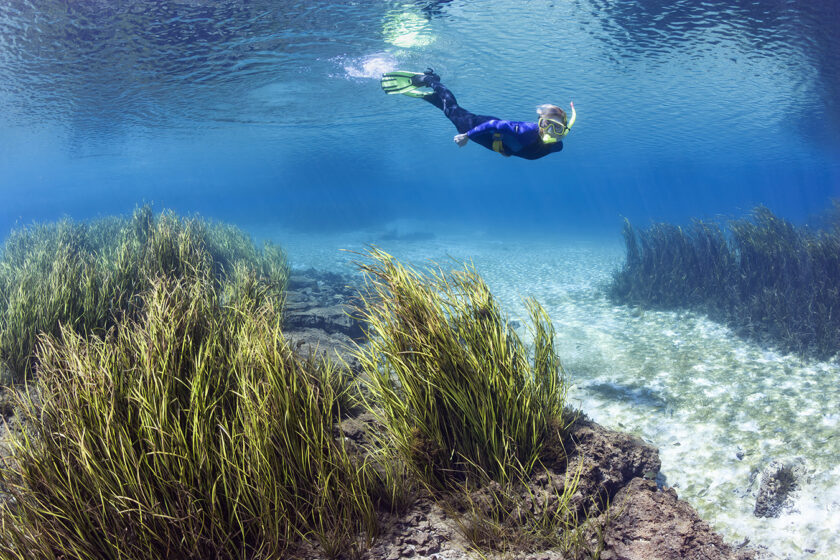Sometimes, you just need to be in the water. One of the simplest, most cost-effective, and yet thoroughly enjoyable ways I know to satisfy this aquatic craving is with a trip under the rainbow, underwater at Rainbow Springs that is.
Rainbow River is one of Florida’s finest clear-water spring runs, and remains a favorite destination for canoeing, tubing, swimming, snorkeling to even diving. A number of shops conduct check out dives in the deep holes located in the river’s mid section, and on busy summer weekends, there may be 100 or more snorkels and scuba divers fining their way downstream.
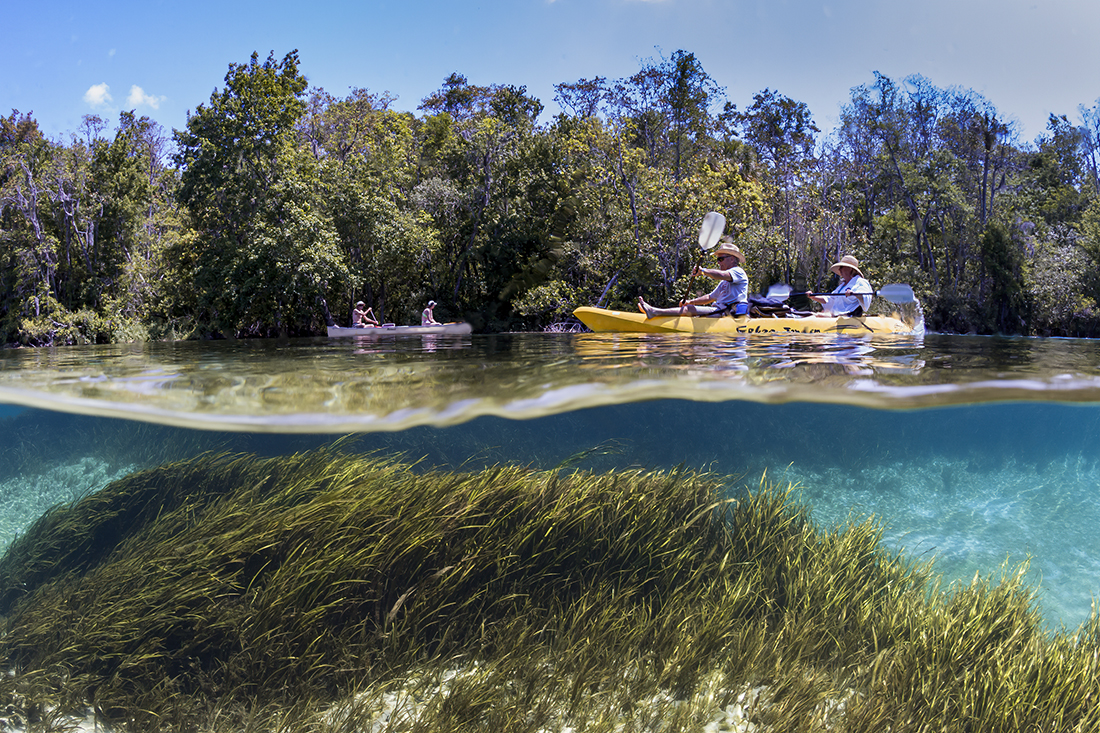
But diving the Rainbow River under these conditions isn’t seeing all it has to offer. Having done my share of trips to this north Florida favorite over the past decade, I’ve developed a simple routine that allows me to explore and enjoy the river on my own terms and my own time frame.
For starters, I generally leave my scuba kit in the car or at home and go at it with mask, fins, snorkel and oh yes, a wetsuit. Though there are a few sections of the river that reach depths of 20 feet or a bit more, depths of 5 to 10 feet are much more common, making the Rainbow River perfectly suited for snorkeling. In fact, divers drifting through many sections will find they must stay at or near the surface to clear the numerous grass beds, and at such times, a heavy back-mounted tank can seem more hindrance than help.
A free-diving profile also liberates me from the scheduling constrains of the commercial operators who serve the river, allowing me to arrive early or late, avoid the crowds and spend as much time in the water as I want.
The Best Times
A Rainbow River drift dive can be enjoyed any time of year, but my favorite times are weekdays in spring or fall, when boat and human traffic are sparse, air temperatures are mild, and the sun is warm but not broiling. But even if crowded summer weekends are your only option, you can still enjoy a superior diving experience if you just know where to start and where to go.
The simplest scenario for gaining diving access is to drive to K.P. Hole County Park, which is located on the western bank of the river, about a mile and a half below the headwater springs. In summer, I like to arrive early not only to beat the crowds and the heat, but also to take advantage of the typically blue skies of morning, while avoiding the cloud buildup of midday that can lead to afternoon thunderstorms.
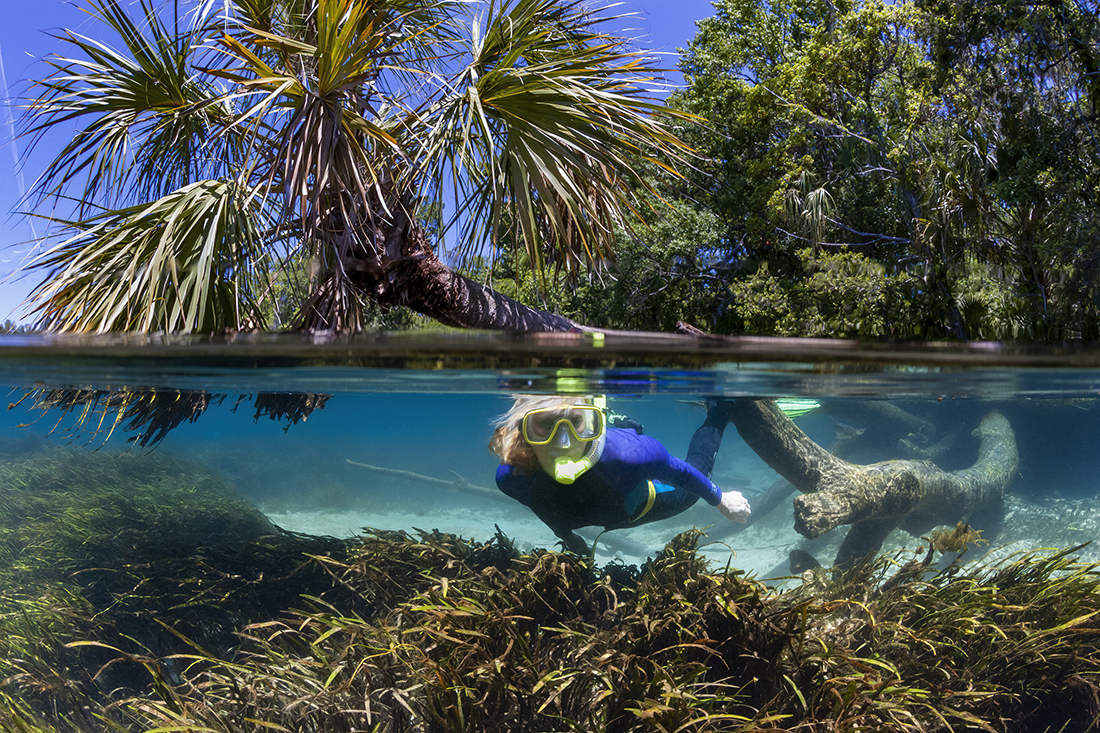
KP Hole Park currently opens at 8 am, at which time there is typically ample parking close to the entrance gate and concession stand. I usually manage to find a shaded space under one of the big live oaks. Later in the day, dive groups and swimmers will fill this parking lot and the adjacent overflow area.
My dive bag is a small mesh backpack, which contains mask, snorkel, full-foot fins, a wetsuit and a waterproof Pelican-style case for keys, wallet, cell phone and other valuables. The river water is typically in the low 70s, which will mean a 3 to 5mm suit for most folks. For me a full 5mm is just enough to keep the chill off to allow me to stay in the water for a couple of hours. While it might be fresh water, with a suit is find a weight belt to submerge is still require.
One additional item you can’t forget is some type of dive flag. More on that later.
Admission to K.P. Hole Park is currently $7 per person, which includes the use of a swimming beach, changing rooms and picnic facilities. Your only other expenditure will be a canoe rental, which will run $50 for the day. If you go down river with your canoe, there is a shuttle fee (for up to three persons) of $25 to return you to the park. On the other hand, if you go upriver and work your way back to the K.P. Hole’s facility, there is no shuttle, no fee involved.
It takes just a few minutes to procure a canoe and load gear aboard. It’s a good idea to bring drinks but be mindful of the river-wide ban on disposable containers – which includes not only beer bottles, but also any type of glass or plastic soda or water bottle. Food and drink should be carried in cooler jugs or plastic storage containers, and there are hefty fines for non-compliance.
Once the canoe is loaded, I usually change into my wetsuit, but only to waist level to prevent overheating during the upstream paddle. Next, I stage the snorkel gear and marker flag in the center of the canoe, where they can easily be reached from the bow or stern seat.
The Price of Admission
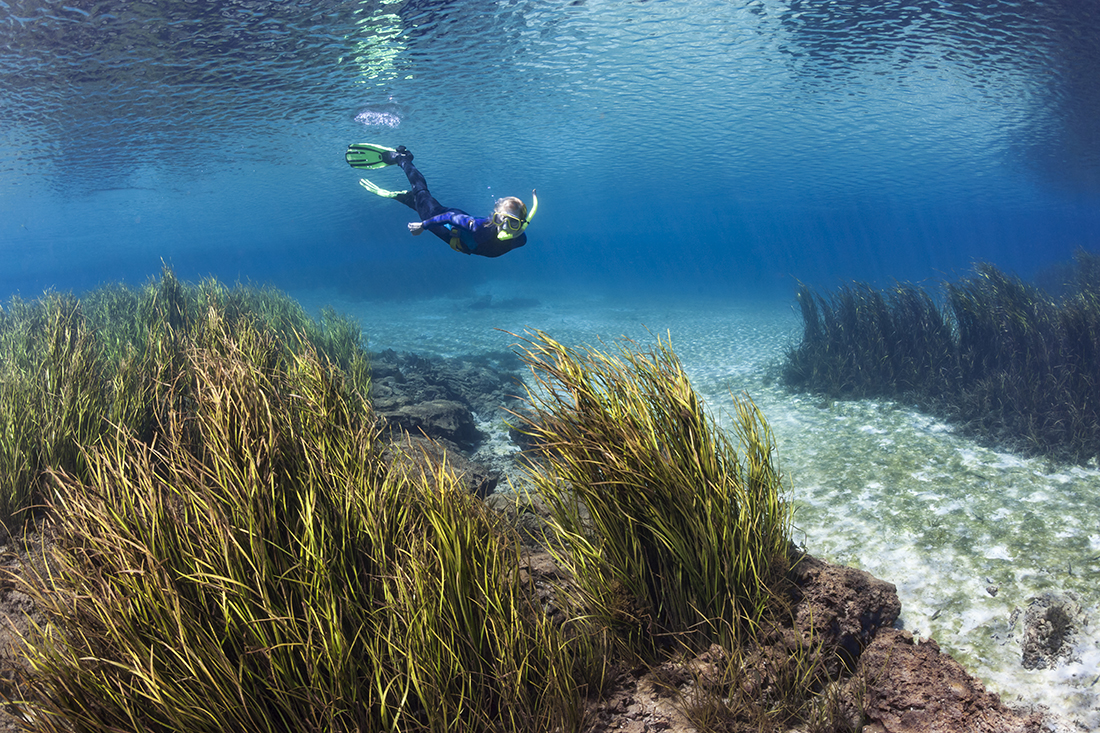
All good things come at a price, and the cost of a private drift of the Rainbow is paid in sweat equity. From K.P. Hole Park, it’s about a mile upstream to the point where I begin my dives. The current is moderate, but it will take some steady paddling to make your way upstream – this is where it can be nice to have a dive buddy to share in the work. You can also lighten the workload by learning to read the river and staying out of the high flow areas in the center of the channel.
If you’ve managed an early departure, river traffic will be minimal. By 10 am on most weekends, you’ll be in the company of other paddlers, along with a few runabouts and fishing boats, and maybe the first of the pontoon boat operators ferrying a dive class. These classes – and many private boats – will stop just past the expansive mid-river grass flats located several hundred yards upstream of KP Hole. It is just to the east of these grass beds where you will find the river’s deepest sections, which are obvious by their darker blue coloration.
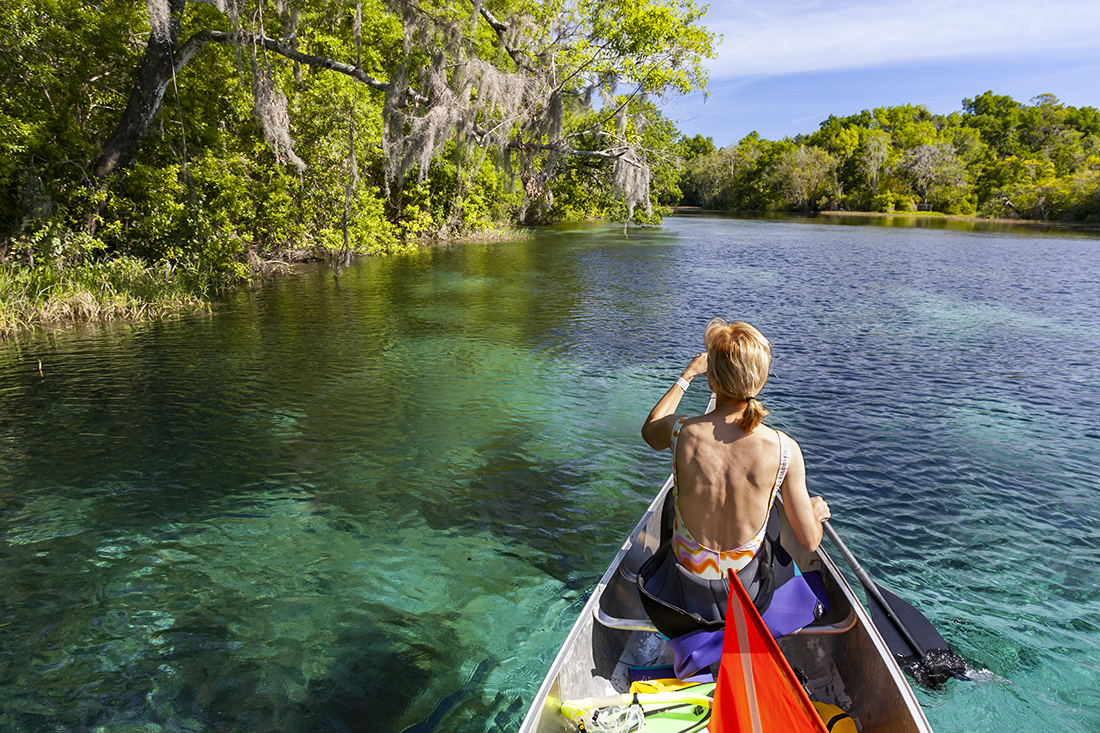
Save this section for your return trip, and instead keep paddling upstream. Hole, for a small channel through the grass the left had (west) bank that will shave several hundred yards off your paddle. After rounding that first large bend, I usually switch to the right (east) bank, which typically has less current, as it is to the inside of a long, sweeping right hand curve.
Keep paddling right up to the point where the private homes on the western bank end, where you will find several “go nor farther” signs along the banks and in the center of the channel. At this point, you will be within sight of the State Park that sits at the river’s headwaters, but divers are not allowed to begin a drift dive from this park, or to be in the water upstream of the signs.
Just before the signs, you’ll notice an inviting picnic grounds on the left bank, but don’t plan on going ashore. The facility is maintained by a nearby subdivision’s homeowners association and is private property. In fact, most of the river’s western bank is private, while the eastern shore is wetlands. Rather than attempt to ease into the swamp or trespass, I simply don my gear midstream – which is why I put on the wetsuit halfway before starting out.
With two in the canoe, it’s best to take turns zipping up and donning gear. The only tricky bit is rolling overboard without tipping the canoe, which I have never considered a challenge, but could see how it might be difficult for some.
About the dive flag: it’s required by law and must be displayed. It’s also a good idea, as there can be considerable motorized boating traffic on the river at times. If you are diving with a group and leaving someone in the canoe, you’ll want to bring a flan-and-float combo that one of your groups can tow. I prefer to mount a flag on a short pole and leave it in the canoe, while carrying a dive reel that is attached to the boat’s bow painter. This arrangement allows me one-handed control of the canoe’s drift, and when I want to linger, I can usually find a rock or log on the bottom to anchor the reel.
The Underwater Scene
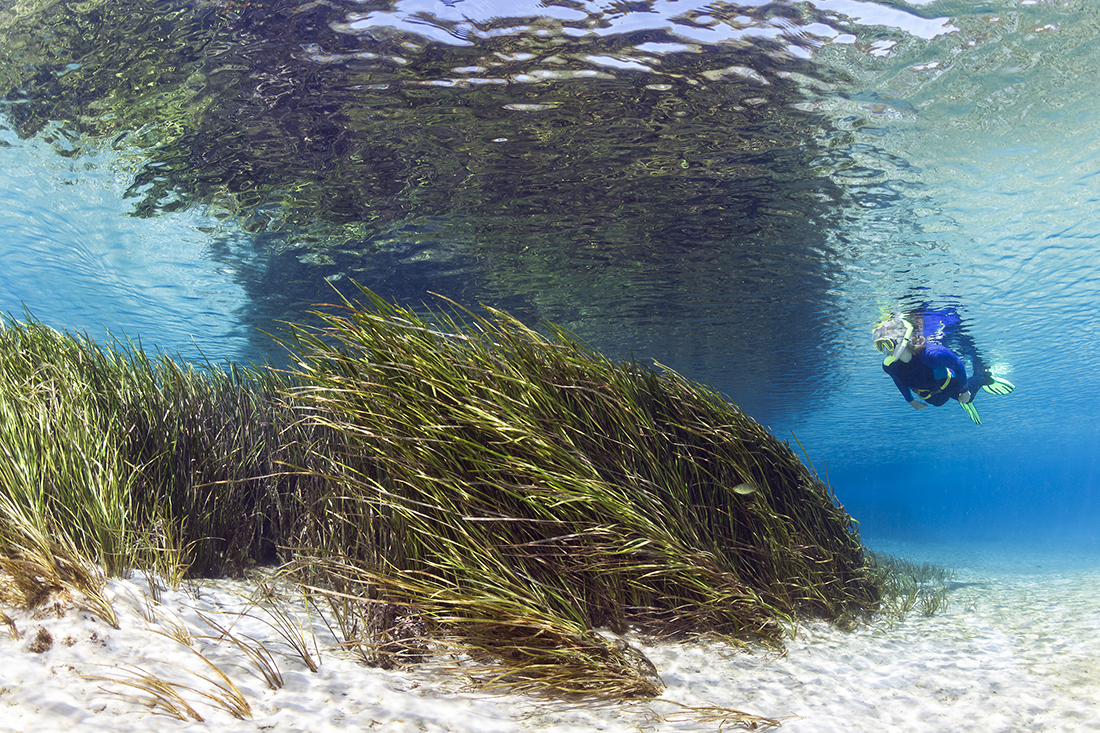
The pictures will do a better job of describing what awaits you underwater, and half the fun of diving the Rainbow is discovering your own favorite sites and sights. In general, the upper portions of the streambed alternate between thick, undulating grass beds and expanses of white sand punctuated by the occasional limestone rock formation.
At points all along the river, you see sand boils, which are actually small spring vents. Combined, these numerous upwellings disgorge some 500 million gallons a day of fresh water.
In addition to the clarity of the water, the two features of the Rainbow that I most enjoy are the light and the fish life. Spend a minute watching dappled rays of sunlight play off the white sand bottom and you’ll understand how the Rainbow got its name.
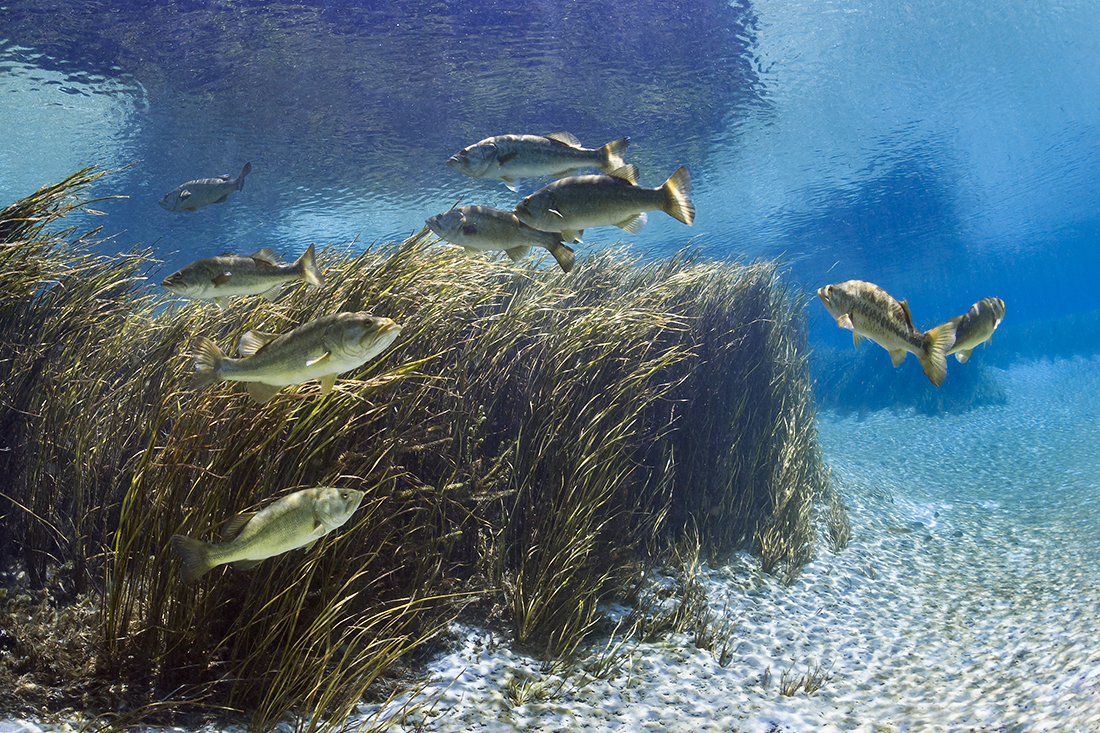
Once you’ve grown accustomed to the view, start watching the fish. Bass, shell crackers and bream abound, and relaxed divers can usually find the lunkers lurking on the downstream edge of a grass bed – this is where snorkeling has the advantage over more intrusive scuba gear. Bowfin (aka mudfish) is another coming sight, as is turtles and various diving birds. On quiet mornings I’ve been fortunate to encounter playing otter.
If you arrived early and paddled briskly, chances are you’ll have the first quarter to half mile of the river to yourself. The farther downstream you progress, the more boat and diver traffic you are likely to encounter.
The commercial tour operators typically deploy dive classes and tour groups somewhere between the half-mile and one-mile points, and once you pass that first group, visibility will diminish slightly as activity increases. This shouldn’t be a cause to cut your drift short, however, as some of the river’s more interesting features still await.
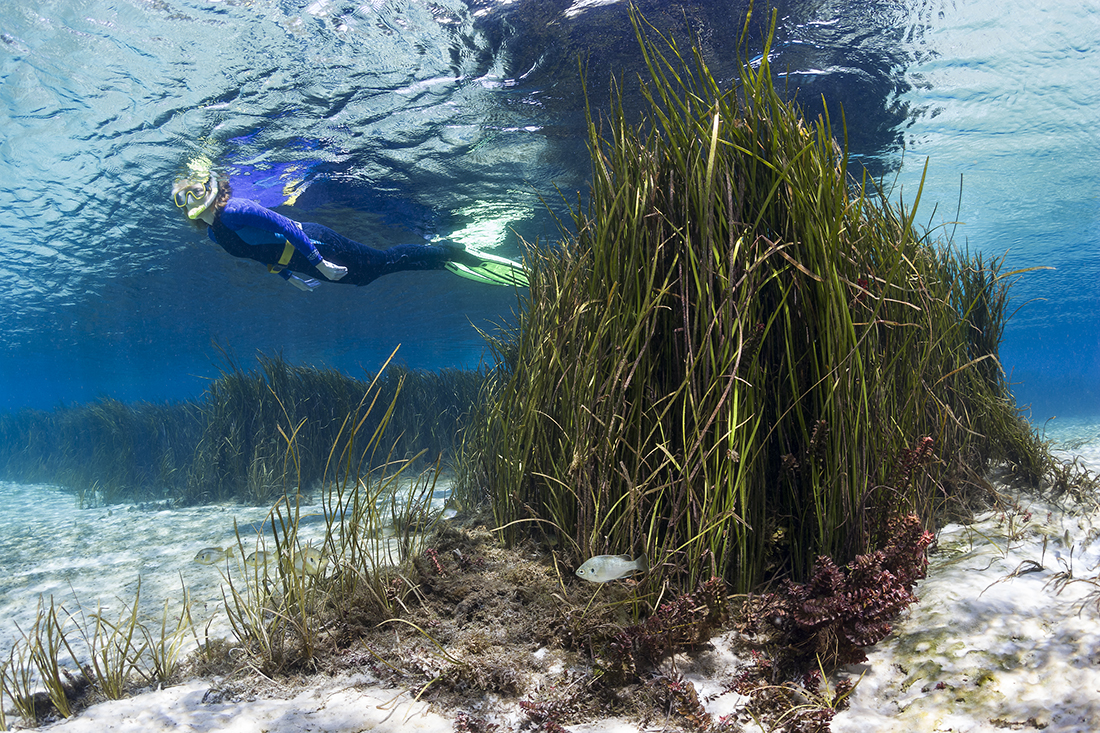
Divers holding to the western side of the stream will find a couple of larger spring vents, one of which looks large enough to squeeze into – though it’s best just to look. The pilings and undersides of private docks also make for interesting exploration, as their shadowed recesses may hold larger fish. Be mindful of property rights and the exposed propellers of moored boats tied to these docks.
At the point where the river widens, you’ll find the first of the deep holes over towards the eastern shore. This is a good place to practice your free diving skills, and there are several interesting ledges and undercuts down in the 20-foot range that will hold your attention. Again, on busy weekends, these deeper sections may be filled with one or more training classes.
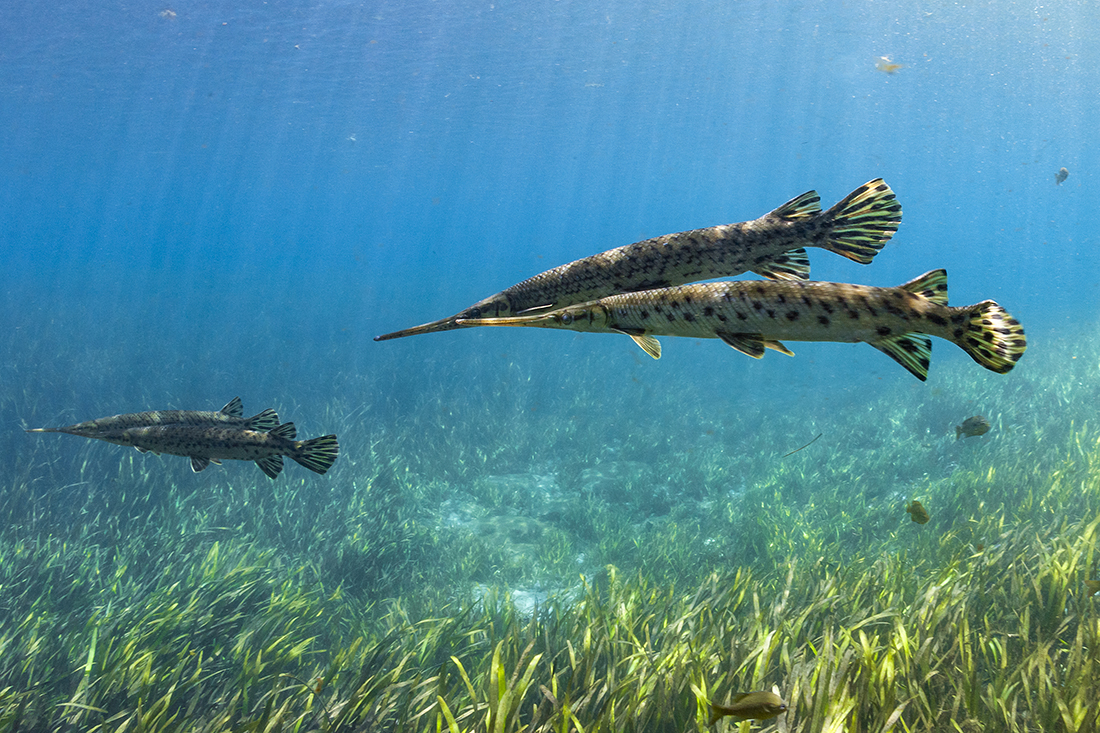
The final stop on the tour is Garfish hole, which is located in the middle of the large grass mats to the east of the deep holes. A depression in the sand bottom leads to a cavern at a depth of 15 feet that is large enough for a diver to enter and turn around –though this is not encouraged. Most times, you will see at least a few of the hole’s namesake fish, but if you are lucky, you will witness a gathering of several hundreds of these prehistoric looking creatures, ranging is sizes up to 3 feet in length.
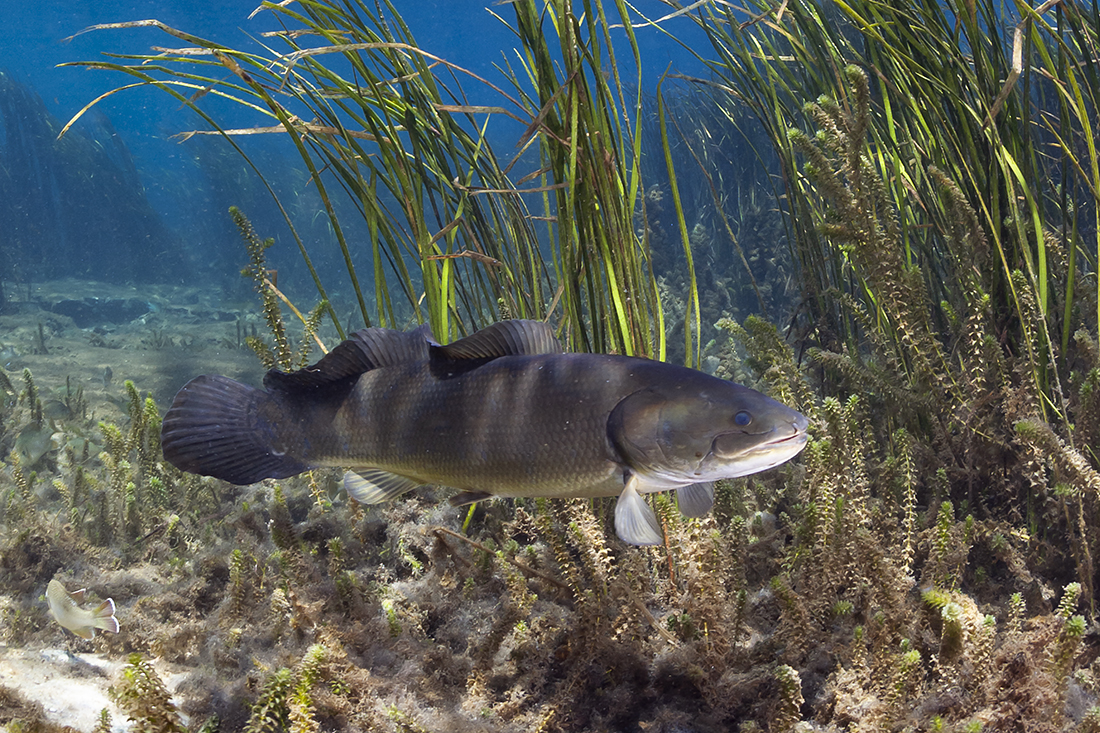
By this point, I’ve usually been in the water for about an hour, and I am ready for a surface interval. It’s possible to make the one-mile drift in 30 minutes if you swim a bit, or to dawdle and spend two hours or more. If you or your dive buddy feel the need to get out of the water at this point, head for the shallow sandbars on the eastern side of the deep holes.
I’ve been known to paddle back for a second round, but most days, one trip down the Rainbow is enough, and I head home feeling renewed and pleasantly waterlogged.
Dive/Snorkel Charters and Personal Boats
If you aren’t into paddling, gearing up and exiting from a canoe or small boat, or simply prefer to let someone else drive the boat, there are a number of commercial operators in and near Dunnellon that provide individual or group charter trips, mostly aboard large, shaded pontoon boats.
Boat owners can launch either from a ramp adjacent to KP Hole Park for a modest fee – though trailer parking is somewhat limited – or use the public ramp three miles to the south on Highway 41, just beyond downtown Dunnellon. From there, there, it’s as short run up the Withlacoochee River to the intersection with Rainbow River.

